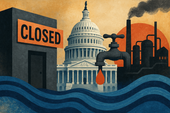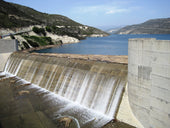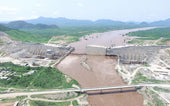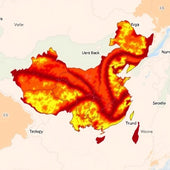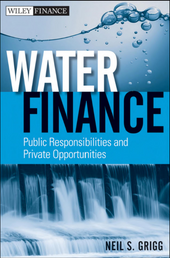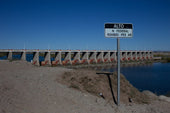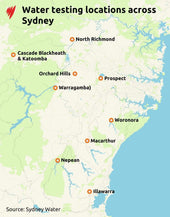
Commentary: 5 Tips for Navigating Federal Funding Chaos

By Wayne Hofmann

On Jan. 27 of this year, I traveled across the country to talk to strangers about federal funding, something I do occasionally. As I drank my morning coffee and prepared my remarks, a colleague sent an article titled “White House budget office suspends all federal grants.” That certainly woke me up — no need for the rest of my coffee.
The new administration has issued a flurry of executive orders and changes to federal agencies over the past few months. These changes have impacted, and will continue to impact, federal grant and loan programs for water systems and utilities. While some of these impacts have been immediate, including cases where grants have been terminated or suspended, many will surface over time and not always dramatically. In many respects, the main threat to the industry is uncertainty in forecasting federal policy and budgetary levels for the near future.
Financial departments at utilities dependent on federal grants and financing have been challenged to predict a very murky future in the coming months and years. While the FY 2026 Federal Budget will provide some clues to how Washington, D.C. will approach water sector funding, the expiration of budget authorization in the Infrastructure Investment and Jobs Act (IIJA) will add more uncertainty in future years. Although we cannot predict the future, we can take proactive steps to mitigate risk and plan for this uncertain future. Here are five suggestions to navigate the chaos.
#1 Assess Risk to Existing and Pending Agreements.
The current administration is thoroughly reviewing funding programs initiated by the previous administration, with particular emphasis on those associated with the Inflation Reduction Act and the IIJA. Many of these programs have focused on environmental justice, equity, and climate change mitigation, which are currently under increased scrutiny. In some instances, agencies are attempting to terminate grant agreements.
The new administration will scrutinize some federal programs more than others. While many offices at the USDA, EPA, and FEMA will be examined closely, infrastructure programs like the State Revolving Funds and Rural Development Utilities Service programs are likely to experience fewer changes and have support in Congress.
For high-risk projects, prepare a contingency plan with federal funding and consider halting work if necessary. For medium or low-risk projects, avoid delays by continuing work and monitoring program changes.
#2 Understand the Difference between Policy and Law.
Although changes occur rapidly at the agency level, it is important to recognize that laws generally remain consistent. Executive Orders guide federal agencies in the implementation of laws but do not modify the laws themselves. Entities utilizing federal funding must navigate the complexities of compliance with the various laws associated with federal funding, despite any apparent lack of enforcement or interest from the agencies.
For instance, while the White House has shown interest in scaling back NEPA through actions like repealing the White House Council for Environmental Quality (CEQ), NEPA will still apply to all federal funding unless Congress acts. Despite discussions about making the government more efficient by removing bureaucratic obstacles, achieving this will be exceedingly difficult if the underlying laws stay the same.
This also applies to federal appropriations. With narrow margins in Congress, there is limited interest in reducing spending. The Executive Branch may try policy changes, but these will face legal challenges.
#3 Watch Your Language.
Some agencies have made immediate changes, including the removal of specific language from their websites, publications, and Notices of Funding Opportunity (NOFO). For example, one federal agency released a new NOFO and renamed the program just two days before the deadline without offering an extension.
These changes often involve key terms such as diversity, equity, and inclusion. It is important to be aware of these modifications when creating narratives and providing context.
#4 Expect the Unexpected.
For most federally funded projects, the risk is not losing funding entirely but facing policy and personnel disruptions at the agency level. The Department of Government Efficiency’s mass layoffs in federal agencies have caused uneven impacts. Some fully funded programs may experience delays due to vacancies in unrelated departments.
In some cases, funding administrators may no longer be there to pick up the phone. While I always recommend maintain close personal contact with grant administrators or financial managers at the federal level, it is even more important now to make sure those people are still there. They can also provide indications of what is to come.
Legal challenges will also impact certain programs, as federal funding recipients try to argue against administration policy in the courts. The recent Supreme Court judgment regarding existing US AID contracts provide an example where the findings of specific legal challenges may impact all projects across a program.
#5 Keep an Ear Tuned to Changes in Washington, D.C.
It is easy to get burned out on politics, but the next few months will be very indicative of how the next few years will evolve. If you prefer not to follow the changes closely, make sure you know someone who does.

Wayne Hofmann is client funding director at Wade Trim. He assists clients to position for and pursue emerging funding sources to meet infrastructure needs. His understanding of federal, state and private funding sources includes both civil infrastructure and commercial construction.
The post Commentary: 5 Tips for Navigating Federal Funding Chaos appeared first on Water Finance & Management.










































































